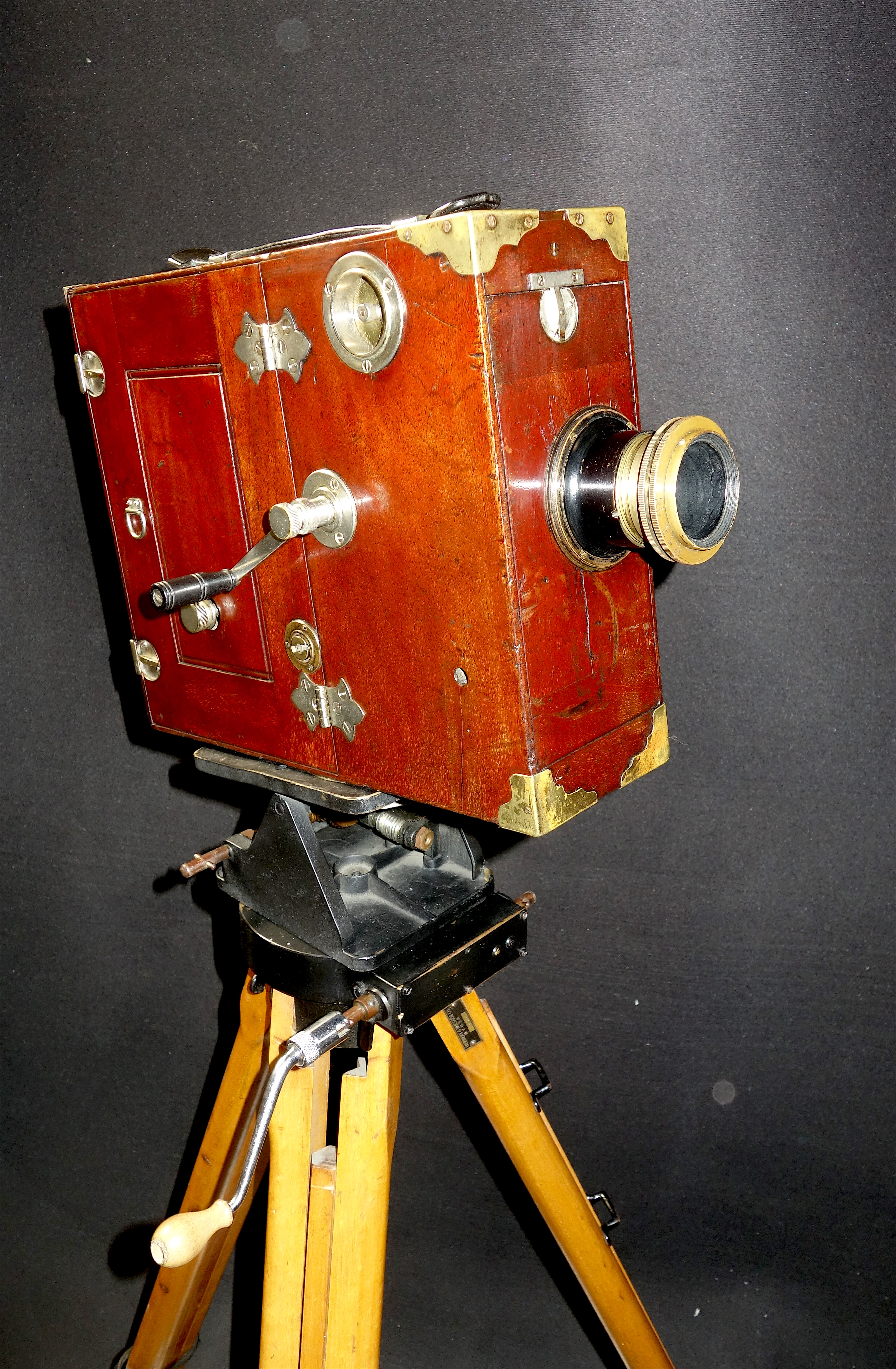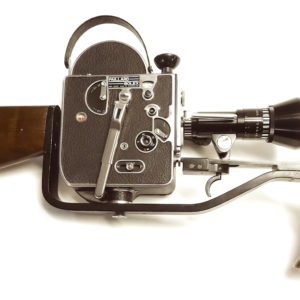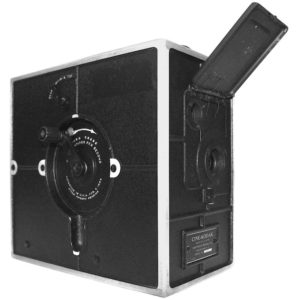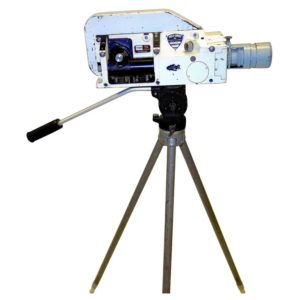Ball, Circa 1913, 35mm Hand Crank Wood And Brass Motion Picture Camera
Ball, Circa 1913, 35mm Hand Crank Wood And Brass Motion Picture Camera
Inquire for pricing
Submitted for your approval is this EXTREMELY RARE Circa 1913 hand cranked wood & brass 35mm motion picture camera. Invented, designed and hand built by Waldon S. Ball.
This one of a kind camera, hand made by Walt Ball, is a non molested, smooth running and correctly preserved example of a significant piece of motion picture history.
It has the two original hand cranks, original wood film magazines, original mahogany wood body, original Zeiss Tessar prime lens, original top leather carry strap, original footage counter, original film movement, original camera tie down fitting, original adjustable shutter and all the original working patina since 1913. Also included are the original camera body hinged doors for both the film movement / magazine side and the gearing drive side.
This is one of the most spectacular cameras we have had at our gallery and would be a proud addition to any collection. The original mahogany wood is spectacular and has never been refinished. All original screws, latches, fitments, hinges, knobs and masks are all original and never restored, just preserved.
We have completed a full external conservation of this camera in our workshop and certify that no restoration was done.
The shown wood tripod is a early century Herbert & Huesgen Co. Geared Head and Tripod and it is included with this camera.
This camera is offered on a MAKE OFFER basis. Please email to discuss any questions you may have. Special discounts are available to museums and non profit collections.
A brief history of Walt Ball:
When Waldon S. (Walt) Ball died in February 1967 at the age of 84, his death marked the end of an era in motion-picture history in the San Francisco Bay area. In his one-man film laboratory in San Francisco, Ball devised a number of machines which were taken over by Hollywood and marketed worldwide.
Mr. Ball did not care to have any publicity or acknowledgment of his role as the originator of the devices. He established his laboratory in the earliest days of motion-picture production, about 1912, when San Francisco was as thriving a theatrical production center as Hollywood. The town of Niles, across the Bay, was the location of the Essanay Studios which turned out many Bronco Billy Anderson “Westerns,” as well as early Chaplin comedies.
A native of Topeka, Kansas, Walt came to San Francisco to establish a machine shop after being introduced to motion picture equipment in 1901 when he worked for Thomas Talley as a projector operator in the first-picture theater in Los Angeles. It was quite natural that his machine shop would be sought out as a place for repairing and construction of motion-picture cameras for the local studios.
In the years between 1911 and 1917 he made and sold a few BALL cameras of his own design which were very advanced for their day. Of particular note is the intermittent movement of extreme simplicity. The vertical motion of the claw is operated by an eccentric crank while the in-and-out motion is performed by a cam on the same shaft. Spring-loading takes out all play and the movement is very quiet and steady.
Standard features of the camera are forward-and-reverse motion and an adjustable (but not dissolving) shutter. For the cinematographer who desired to make scenes with special effects, a series of masks, stored conveniently in the side door, permitted split-screen dual roles, a binocular viewpoint at the racetrack, a keyhole for mystery, or a heart for the final fade-out.
About 1912, Ball opened a film laboratory to augment his machine shop. He used a printer of his own design and the rack-and tank system of processing. He hired a young man by the name of Frank Capra to wind film racks and to process film being shot by entertainment film producers of the area. But the employment of Capra was brief because the potential of motion pictures so intrigued him that he became a director at the Montague Studios as the first step toward “It Happened One Night” and other motion-picture classics.
In 1919 Ball made a slow-motion camera with a three-pin geneva intermittent, which he called the Novograph, and he entered into a contract to furnish a weekly film subject to one of the major Newsreel companies.
One of the most ingenious devices made by Ball was a contact printer made in 1928 which automatically makes lap dissolves from a single-run negative by a simple notching of the two scenes near the splice. As the first scene comes to the end, a shutter fades out the printer light, the raw stock is lifted from the negative, backed up the length of the overlap dissolve and re-combined with the negative in frame. The second scene is then faded in to complete the dissolve.
In the 1930’s, Ball built and used laboratory functions for 16mm film and that added another chapter to the Walt Ball story.















